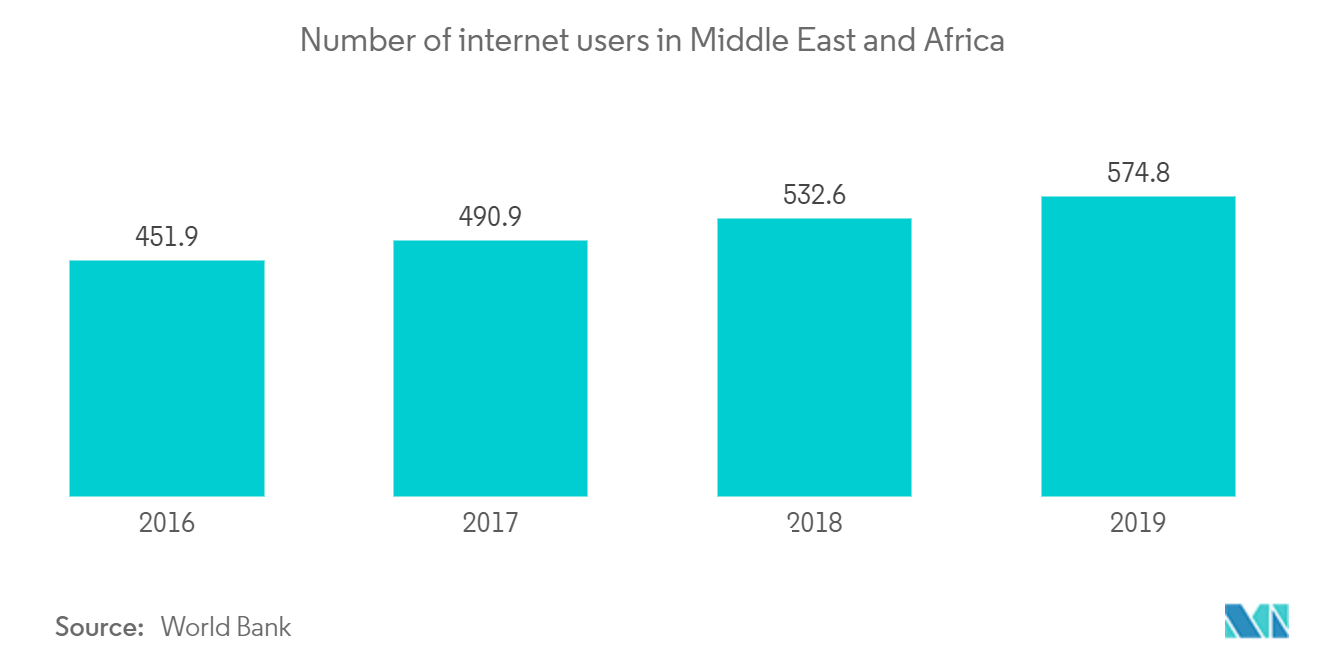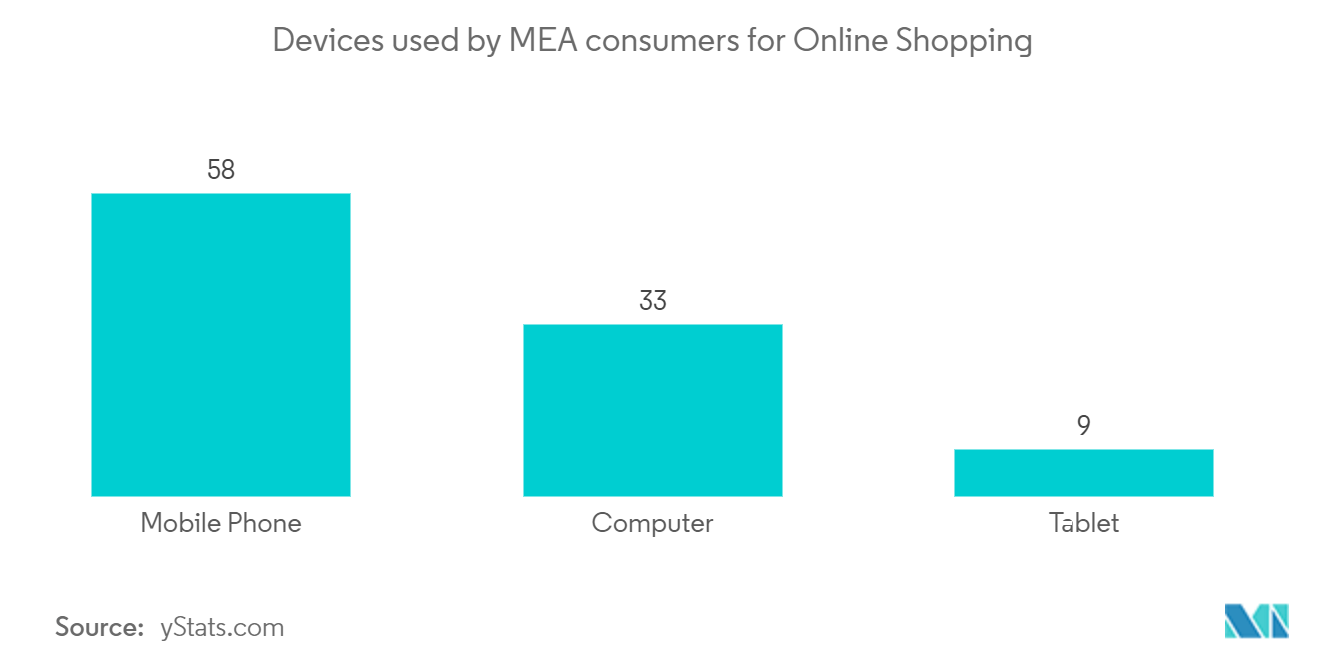Market Trends of Middle East and Africa E-commerce Industry
This section covers the major market trends shaping the MEA E-commerce Market according to our research experts:
Increase in the Adoption of Latest Technology
As the number of digital channels grows, so does the number of people who use them. According to a Standard Chartered survey, nearly half of the region's consumers now prefer online purchases to use in-person cards or cash, signaling a significant departure from the previous transaction practices.
Increased ICT usage is thought to increase financial inclusion, whereas more financial sector participation is necessary for e-commerce growth. Advanced mobile phone adoption, combined with enhanced internet access, has undoubtedly contributed to the rapid growth.
A rising number of African SMEs are attempting to establish their own digital identity by creating websites and having their e-mail addresses to develop e-commerce and increase export capacity.
B2B e-commerce market was slower to take off than its retail counterpart and is expected to grow more than twice as fast as the B2C sector through 2030. The rapid growth of digital payments plays an important role in this growth.
While two-thirds of customers in the Middle East now expect access to digital services when shopping or doing business, 67% of the region's SMEs offer no online sales at all, according to a survey by logistics firm UPS. Gartner, meanwhile, reported that only 15% of businesses in the region have an online presence.

Increase in the Usage of Smartphones
The growing significance of mobile in digital commerce is fueled by high connectivity and smartphone ownership levels, increased spending power, and affluent lifestyles, notably in the Gulf.
In South Africa, introducing low-cost smartphones and feature phones with smart functions has led to a significant shift in customer behavior from PC to mobile for digital commerce. Influential elements include mobile retailing, banking, social media, and offers received via cell phones.
Consumers can now pay with their phones thanks to partnerships with major digital wallet providers and a wide selection of local retailers. Over the projected period, proximity payment will allow the movement that began as financial inclusion for the unbanked population in rural regions of Africa and is now associated with convenience in the Gulf region to take off.
Android smartphones have also recently caught up to Artificial intelligence and virtual assistance software with google assistants that allow the user to pass voice command and gives equal coemption to Siri in iPhones. With such features, android is becoming increasingly sophisticated over time as it seeks to integrate after elements with different versions that help refine the products.
The region is witnessing increased product innovations due to increased competition between players to introduce the latest features and capture the market. Many regional states are increasingly investing in expanding the scope of commercial 5G networks. With commercial launches in mind, Etisalat and Ooredoo have been undertaking live 5G trials on speed, equipment, latency, and beam steering (for signal distance).

